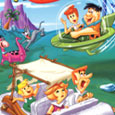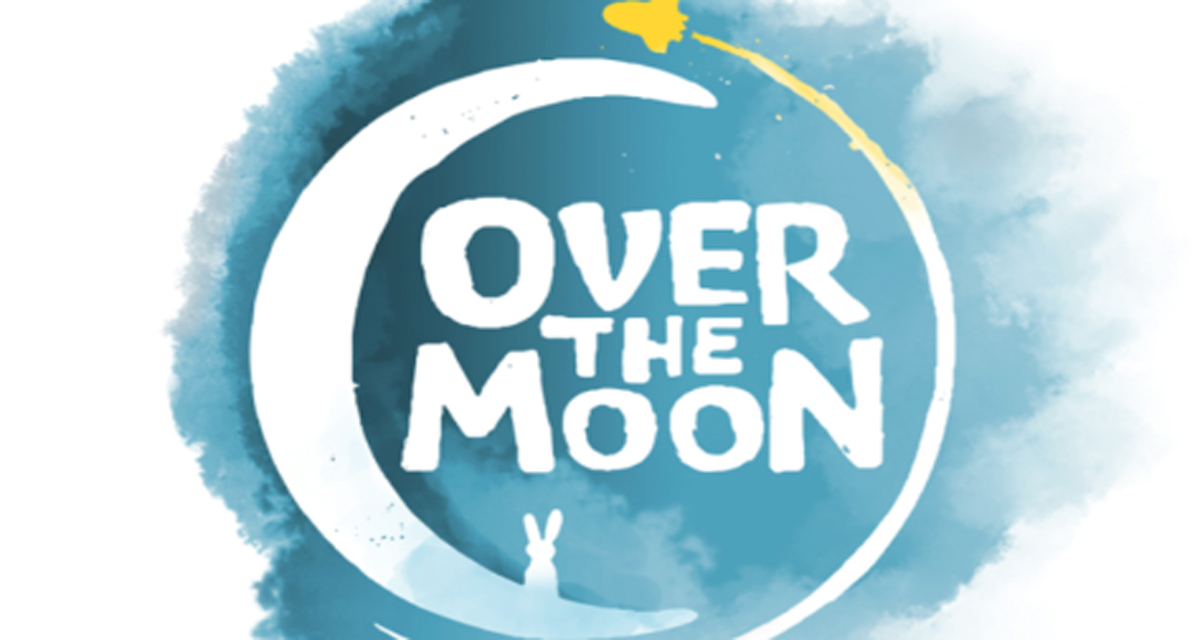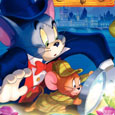 Coming on Netflix February 9, My Dad The Bounty Hunter is an animated action-comedy series following close-knit siblings Lisa and Sean, who stow away on their dad’s latest work trip, hoping to finally get some quality time together. Little do they know Dad’s been keeping a secret from them — he’s actually the toughest bounty hunter in the galaxy!
Coming on Netflix February 9, My Dad The Bounty Hunter is an animated action-comedy series following close-knit siblings Lisa and Sean, who stow away on their dad’s latest work trip, hoping to finally get some quality time together. Little do they know Dad’s been keeping a secret from them — he’s actually the toughest bounty hunter in the galaxy!
Launched into the surprise space adventure of a lifetime, Lisa and Sean discover that their seemingly average dad has a job that is anything but boring. Dodging dangerous aliens, robots, and laser fights galore, family bonding time becomes much more than they bargained for as they try to help their dad in pursuit of his toughest fugitive yet. With his kids along for the ride, Dad must show up for them when they need him most — and they’d better make it home before Mom finds out!
Everett Downing and Patrick Harpin are the creators of this warp-speed adventure across the constellation of ups, downs and moments in-between that shape family life.
Everett is a feature film story artist and animator with over 15 years of experience in the industry, having worked in both capacities at studios such as Blue Sky Studios, Pixar Animation Studios and DreamWorks Animation.
Patrick is also a story artist. As such, he contributed to series and films like Gravity Falls, Hotel Transylvania 2 and Hotel Transylvania 3: Summer Vacation, and also The Smurfs And The Lost Village.
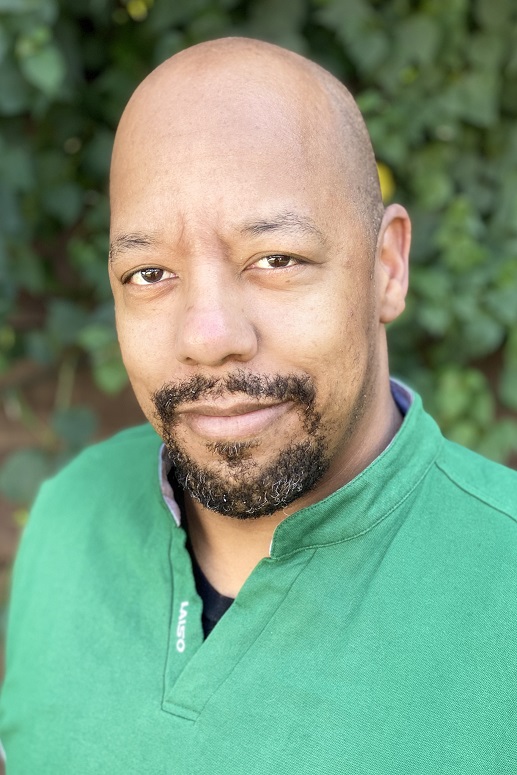
Animated Views: First of all, can you take us through the initial idea and the early development of the series.
Everett Downing: Pat and I frequently had coffee with each other and we would lament about not being able to tell the stories that we wanted to tell. We’d kick around all the films we loved and the types of stories we wanted to tell. We share a mutual love for the Amblin days — stories with kids’ adventures like The Goonies or E.T.
Patrick Harpin: We talked a lot about those stories, about how there’s movies for kids and then there’s movies about kids. Like E.T. and Stand By Me — those are about kids, but they’re more than just kids’ movies. They’ve got more substance. We were just talking a lot about what we’d want to see on screen. And since we’re both big sci-fi heads, we felt the genre could do so much more than it was doing right now.
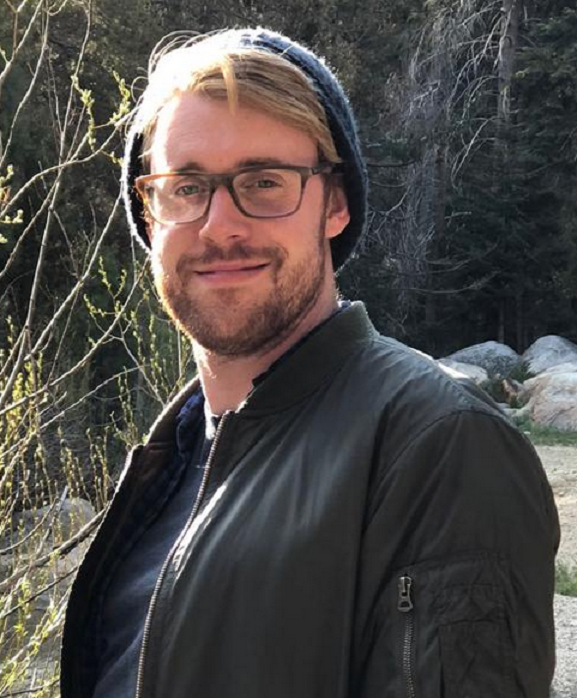
AV: When did you realize that your sci-fi story wouldn’t just be about kids, but an entire complex family dynamic?
ED: I had two young girls at the time. After spending all this time on movies that I hoped would be great, but sometimes weren’t, I started to wonder, “What am I doing here?” So, I wanted to write a love letter to my family. And Pat and I both felt we wanted to tell stories about dads where the dads weren’t idiots.
PH: That was actually my dad’s request. He was like, “Can you show somebody who’s at least trying?” So, we thought it would be cool to show a more three-dimensional family conflict, but also, any sci-fi story is only as good as the people in it. The people ground it. If they’re grounded and you believe in them, you’re going to believe in the more spectacular elements of the story.
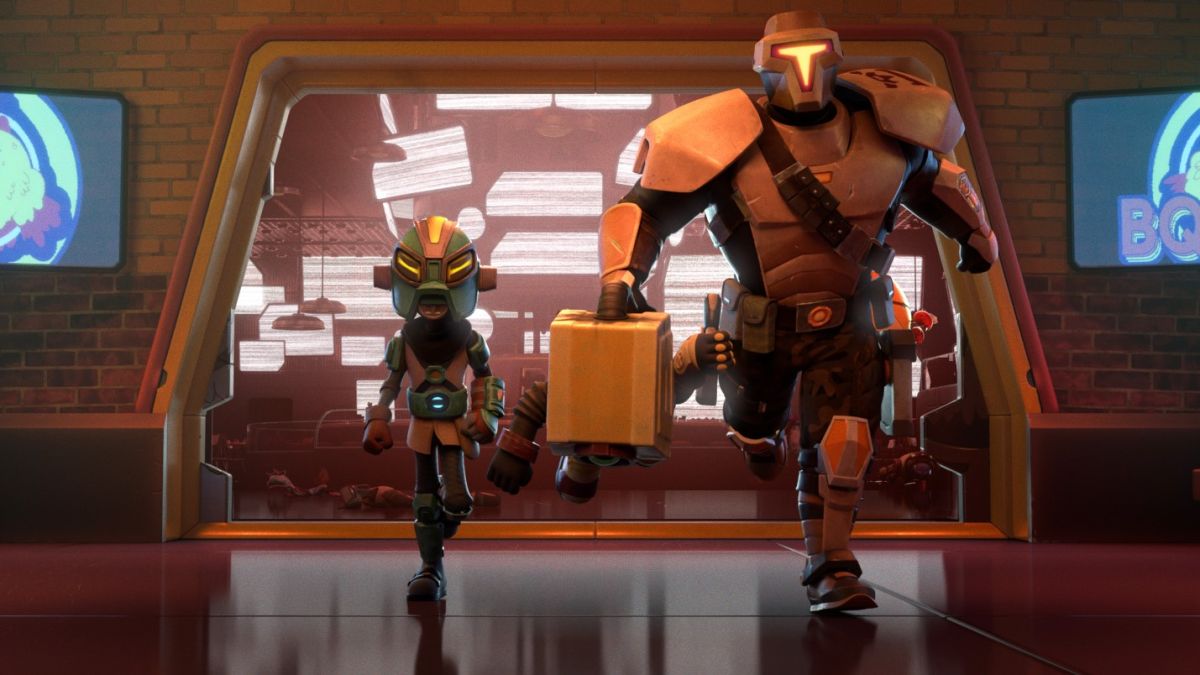
AV: How did you achieve that balance between strong cinematographic references and doing a kids’ series?
ED: There’s this wealth of material that came out in the late 80s – early 90s in sci-fi that we hadn’t seen in a while, and there’s such creativity in it that we wanted to revisit those points of inspiration. From the beginning, we wanted to do something that we were inspired by but we also wanted to try to do a new take on it. So, everything that we were working on comes from very specific points of inspiration, and then we asked ourselves, “what do we add into it?”, like you add value to something.
PH: Also, I think, sci-fi can be about the future, but it’s usually about the time it’s made in. We are inspired by all this stuff, but that’s essentially the medium that we’re using. The message and everything we’ve done is what we feel, and we kinda do it through this genre. And in terms of film language, we referenced things that are not sci-fi all the time. We were just trying to find the best way to shoot like, say, someone crawling through an air duct. Die Hard! They have the best air duct scene. So, let’s get some fish eye on that, just like they did. We were also inspired by David Fincher’s movies, and things like that, like for Blobby’s apartment, and also by the movie Dredd, some harder sci-fi that we could mix in into our kids cartoon. So, it’s more like a general approach, I guess.

AV: The way the series is shot is also very interesting.
PH: Indeed, we tried to shoot a lot of times from the kids’ point of view up at the dad or the dad looking down them. But always keeping a kind of kid-eye level. They’re the ones we want to experience things through, so, that definitely affected our shooting style.
ED: We were very specific. Most of the time, it’s the kids but there are a few times, when we are with the parents, the perspective changes.
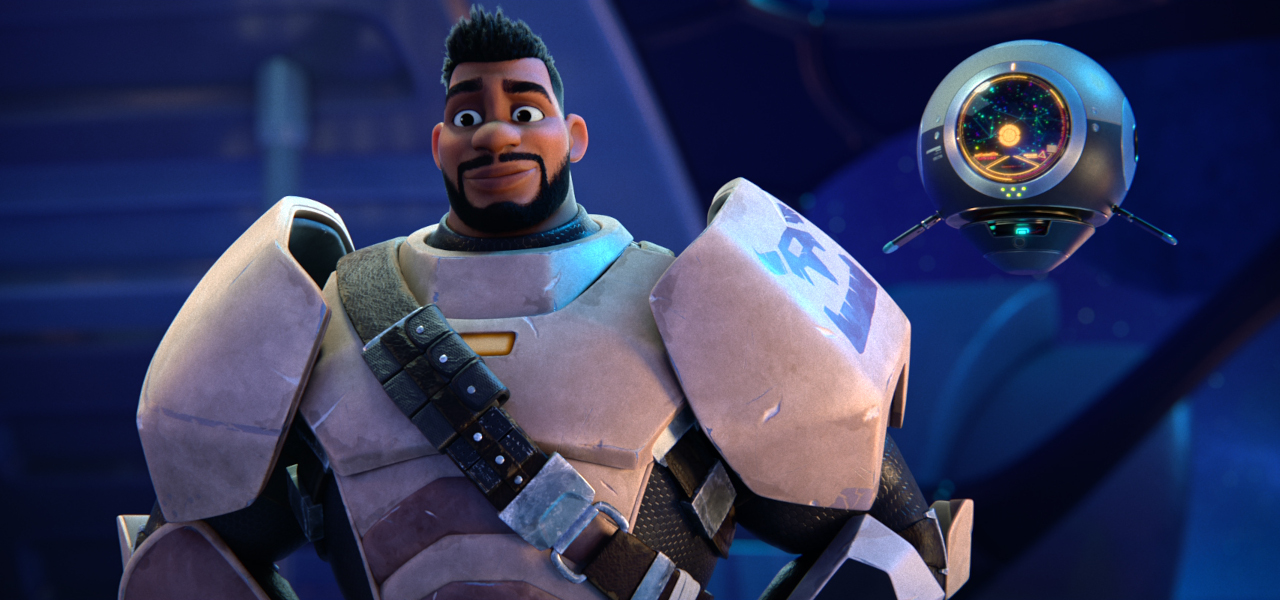
AV: Can you tell me about the music, which is very original and very strong for a kids’ series.
ED: Music is such a big factor in our show. We really wanted to feel different. First, we wanted it to be influenced by what the dad could like when he was younger, like hip hop from the 90s. Also, the king of sci-fi for us is John Carpenter, and Pat came up with this idea of “hip-pop John Carpenter”. Then, they gave us a list of composers. It was a long list, and Pat and I listened to the whole thing separately, and we both agreed Joshua Mosley was the best person for our show.
PH: Everybody on this production treated it like a movie, even if they weren’t supposed to. That was just a ripple effect throughout the production. And Joshua did the same. For him, the series looked like a movie, so, he wanted to treat it like a movie. It’s really big, both music and sound in general.
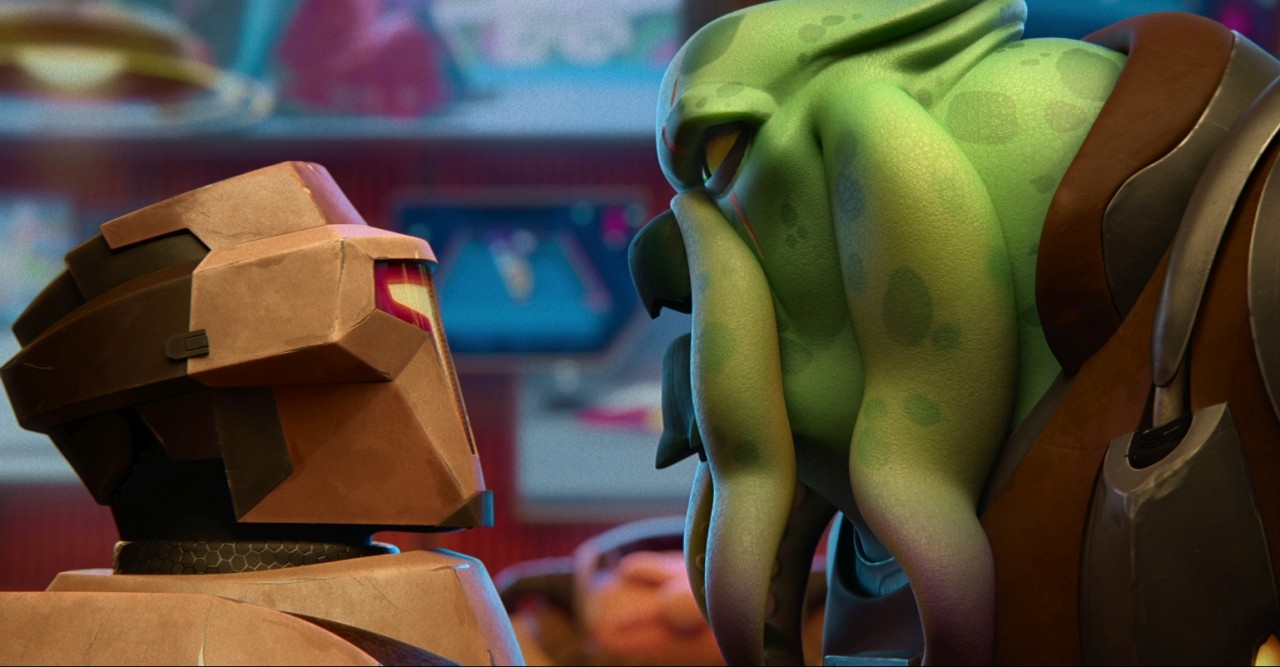
AV: How did your collaboration go with Dwarf Studio, which is based in France?
ED: It was really a great experience. When we got our okay for the development of the series and wanted to test some studios, we got in touch with 4 different ones. In the end, we got 2 contenders, one of them being Dwarf. They both had really strong animation tests but there was just something about Dwarf that felt really cinematic. It felt like an animated movie. The quality was so high. And they did their best to adopt all the elements that we put together and displayed them to us. So, that was clear to us.
PH: Their tech sci-fi design was so elevated, the hair on the characters, the textures, everything that Dwarf was doing was at such a high level. So, we had to go with these guys. And French sci-fi is best. The Fifth Element was more of an influence on us than Star Wars! Because Fifth Element is more playful. Dwarf brough such a level of believability to the whole world and a feature quality to what could have been a cheap-looking series.
ED: And at a time when everyone was working remotely because of Covid, the distance wasn’t a problem. Our schedules worked out very well. When they were finishing their days, the day we would start out for us, so that made a very good point of contact.
PH: It was definitely a learning process. This was not an easy show to do. And Dwarf, to their credit, has never wavered in quality. We’re still finishing stuff right now (the interview was done November 30th, 2022) and it still looks as good as the first episodes, and sometimes even better!
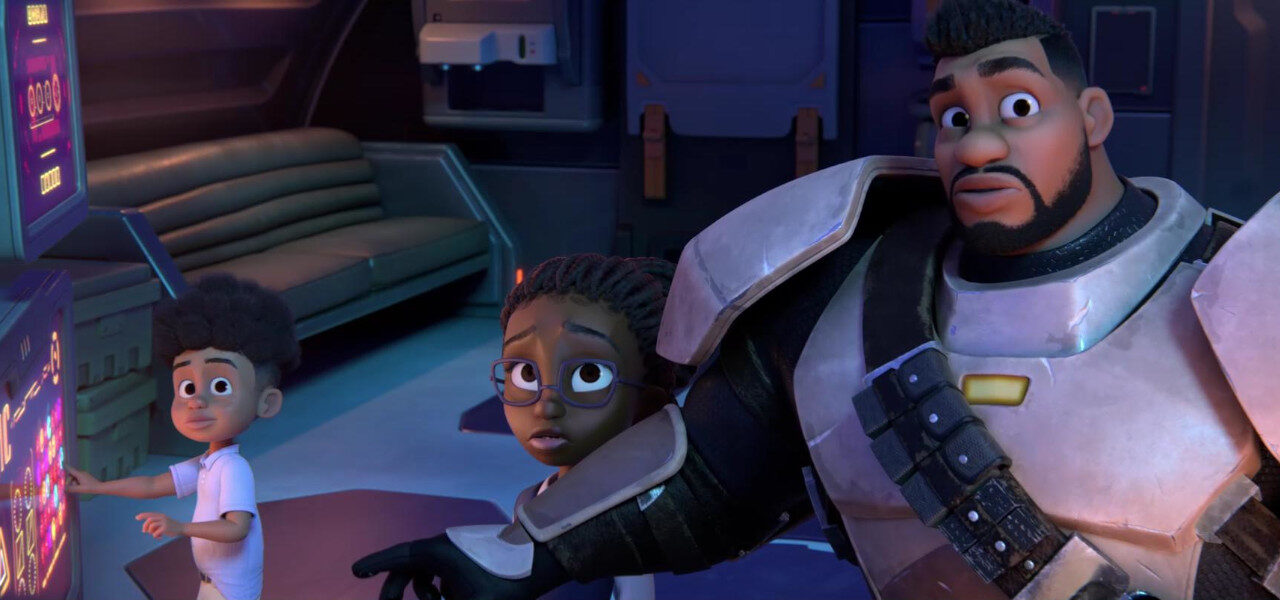
With our thanks to Fumi Kitahara, Everett Downing, Patrick Harpin and Amber Bracken.




